
|
You entered: sky
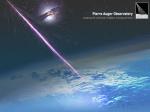 Cosmic Rays from Galactic Centers
Cosmic Rays from Galactic Centers
12.11.2007
Where do cosmic rays come from? A major step toward answering this century old question may have just come in from the Auger Observatory project, the world's premier cosmic ray observatory. That high energy fundamental particles are barreling through the universe has been known for about a century.
 Sutter s Mill Meteorite
Sutter s Mill Meteorite
28.04.2012
Last Sunday's bright fireball meteor falling through skies over California and Nevada produced sonic booms over a broad area around 7:21 am. Estimates indicate the meteor was about the size of a minivan.
 Along the Western Veil
Along the Western Veil
6.09.2018
Delicate in appearance, these filaments of shocked, glowing gas, are draped across planet Earth's sky toward the constellation of Cygnus. They form the western part of the Veil Nebula. The Veil Nebula itself is a large supernova remnant, an expanding cloud born of the death explosion of a massive star.
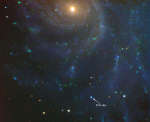 A Young Supernova in the Nearby Pinwheel Galaxy
A Young Supernova in the Nearby Pinwheel Galaxy
26.08.2011
A nearby star has exploded and telescopes all over the world are turning to monitor it. The supernova, dubbed PTF 11kly, was discovered by computer only two days ago as part of the Palomar Transit Factory (PTF) sky survey utilizing the wide angle 1.2-meter Samuel Oschwin Telescope in California.
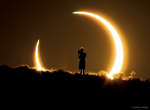 An Annular Solar Eclipse over New Mexico
An Annular Solar Eclipse over New Mexico
25.12.2019
What is this person doing? In 2012 an annular eclipse of the Sun was visible over a narrow path that crossed the northern Pacific Ocean and several western US states. In an annular solar...
19.05.2011
This dusty island universe is one of the brightest spiral galaxies in planet Earth's sky. Seen nearly edge-on, NGC 253 is only 13 million light-years away, the largest member of the Sculptor Group of galaxies, neighbor to our own local galaxy group.
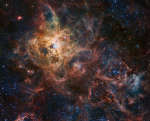 The Tarantula Zone
The Tarantula Zone
8.03.2024
The Tarantula Nebula, also known as 30 Doradus, is more than a thousand light-years in diameter, a giant star forming region within nearby satellite galaxy the Large Magellanic Cloud. About 180 thousand light-years away, it's the largest, most violent star forming region known in the whole Local Group of galaxies.
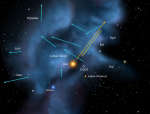 APOD: 2024 December 22 Б The Local Fluff
APOD: 2024 December 22 Б The Local Fluff
22.12.2024
The stars are not alone. In the disk of our Milky Way Galaxy, about 10 percent of visible matter is in the form of gas called the interstellar medium (ISM). The ISM is not uniform and shows patchiness even near our Sun.
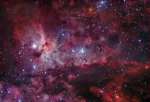 The Great Carina Nebula
The Great Carina Nebula
9.06.2011
A jewel of the southern sky, the Great Carina Nebula, also known as NGC 3372, spans over 300 light-years, one of our galaxy's largest star forming regions. Like the smaller, more northerly Great...
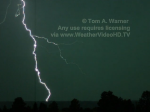 Lightning Captured at 7207 Images per Second
Lightning Captured at 7207 Images per Second
23.07.2012
How fast is lightning? Lightning, in fact, moves not only too fast for humans to see, but so fast that humans can't even tell which direction it is moving. The above lightning stroke did not move too fast, however, for this extremely high time resolution video to resolve.
|
January February March April May June July |
|||||||||||||||||||||||||||||||||||||||||||||||||